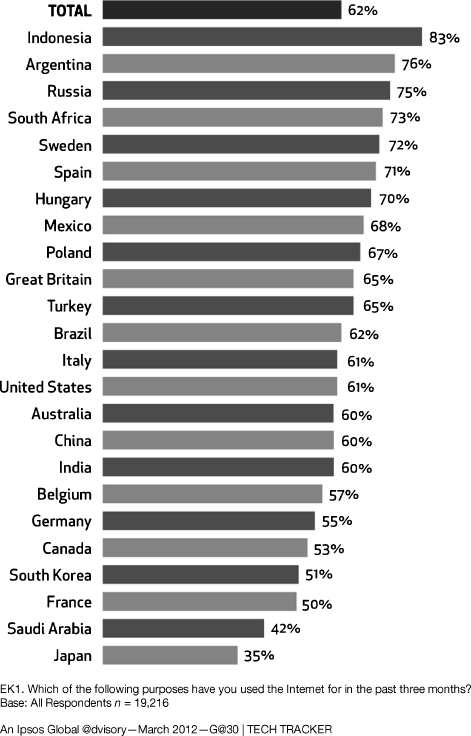Chapter 10
Building Bridges
Of all the aspects of a complex social media system, probably none is more perplexing than an increasingly global audience that divides and subdivides itself along geographic, economic, social, cultural, political, gender, age, ethnic, and even religious distinctions. These disparities affect not only what kinds of content audiences access, but also how they access it and how they interpret it. Nothing distinguishes social media from traditional forms of marketing more than the changing relationships between brands and these diverse audiences.
Social Is Global
At the end of 2012, more than 1.5 billion people on the planet were using social media, and 6 in 10 of them regularly connected with social networks, forums, or blogs.1 The percentage of social media users in more than a dozen countries is greater than that of the United States (Figure 10.1), and in many parts of the world they are more willing to engage with brands. In China, for example, more than half of all Internet users say that they would buy a product or service because someone they knew “liked” or followed it online.2 That response dwarfs the 15 percent of Americans who would do the same.
Figure 10.1 Nations Visiting Social Networking Sites

There is also a good deal of diversity within the United States itself. Women use social media more than men, younger users usually spend more time ...

